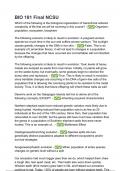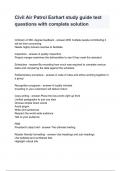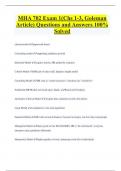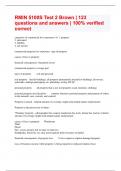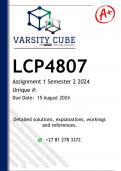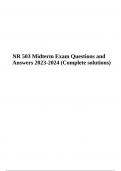Exam (elaborations)
BIO 181 Final NCSU Final Exam Questions and Answers Solved 100%- Correct!!
- Course
- Bio 181 ASU
- Institution
- Arizona State University
BIO 181 Final NCSU Final Exam Questions and Answers Solved 100%- Correct!! BIO 181 Final NCSU Final Exam Questions and Answers Solved 100%- Correct!!
[Show more]
